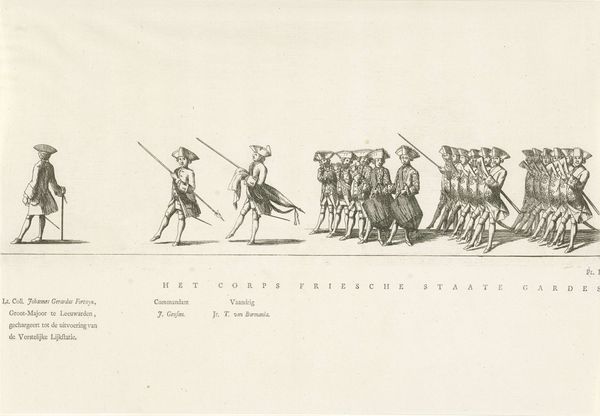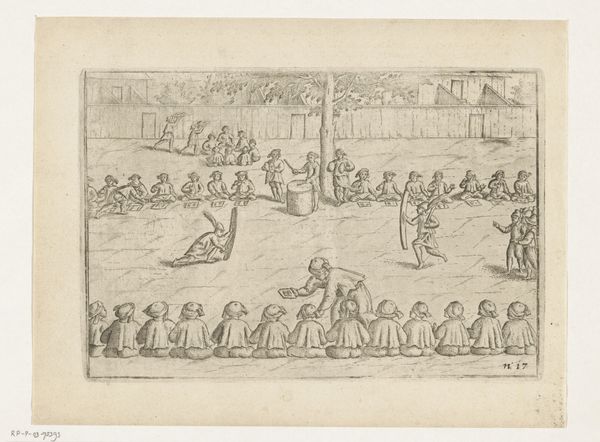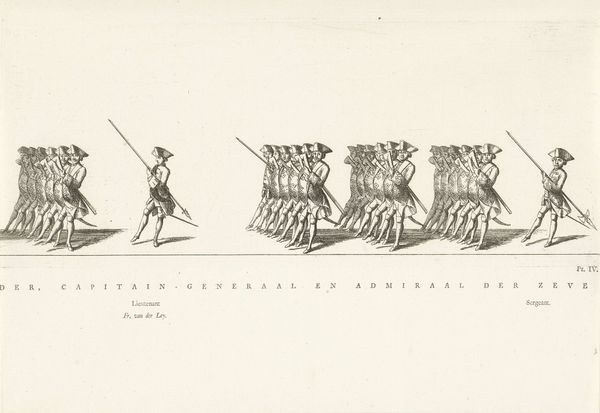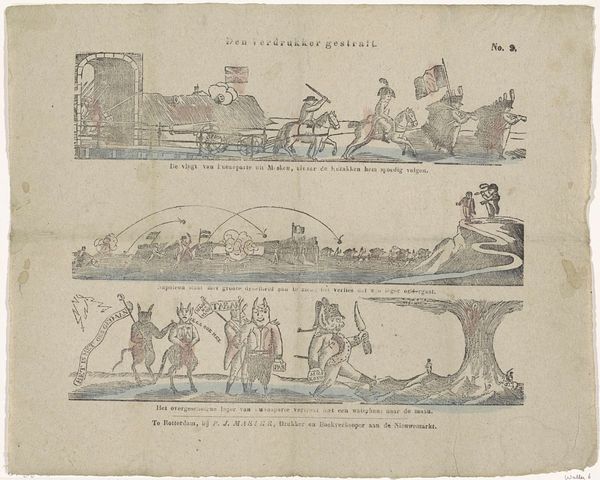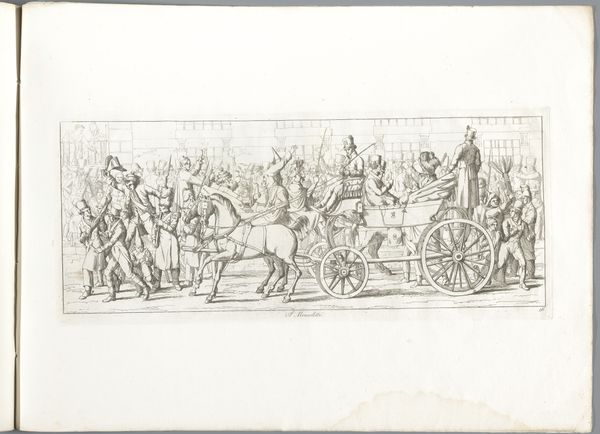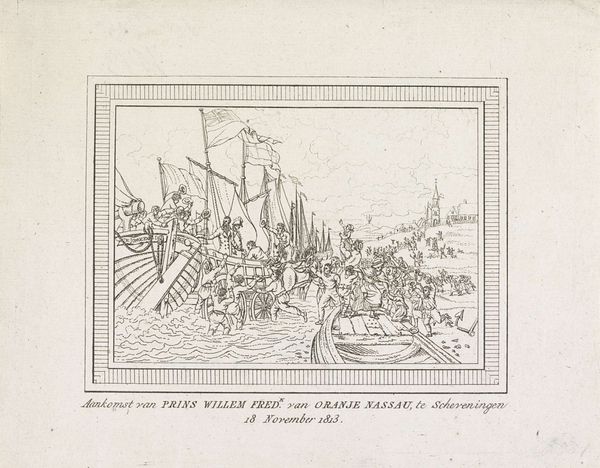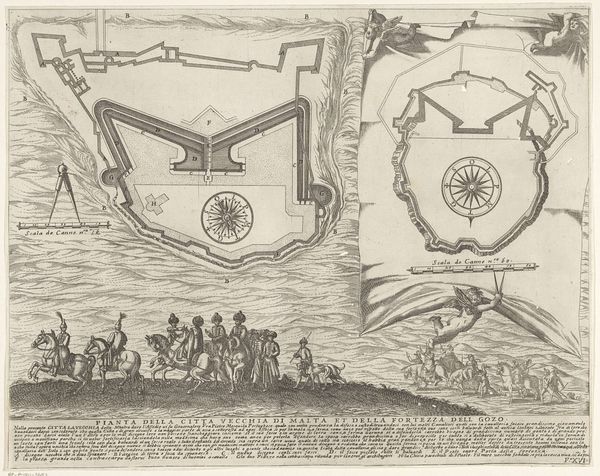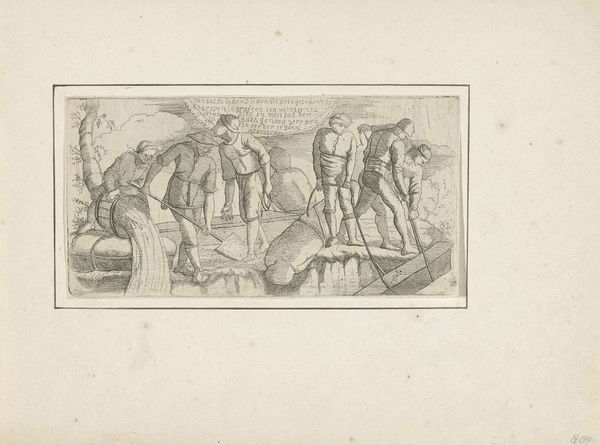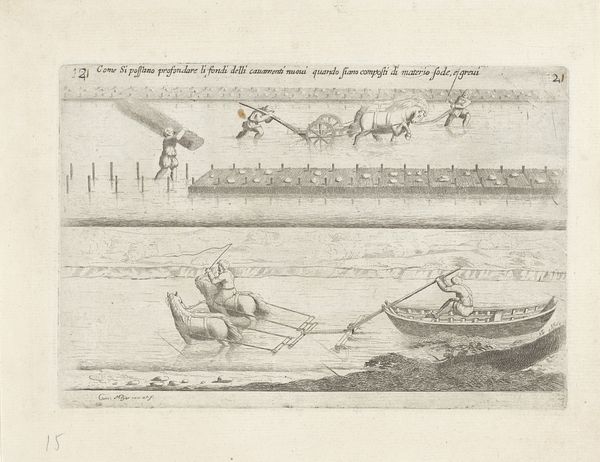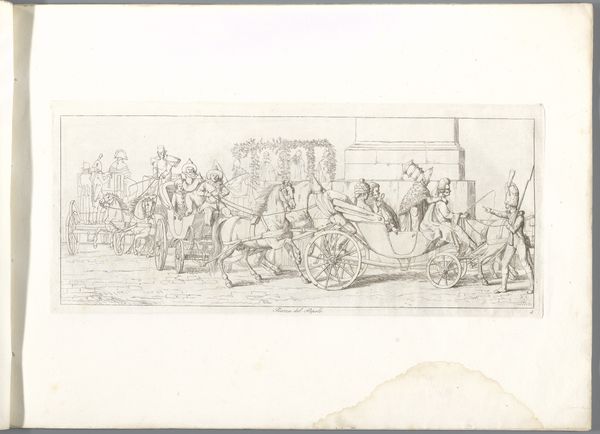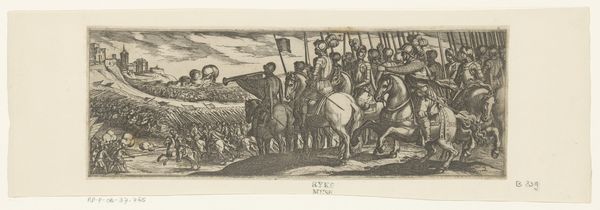
Willem I de Veroveraar op het borduurwerk van koningin Mathilde 1776 - 1851
0:00
0:00
danieliveelwaard
Rijksmuseum
print, engraving
#
medieval
#
narrative-art
# print
#
old engraving style
#
hand drawn type
#
personal sketchbook
#
sketchbook drawing
#
sketchbook art
#
engraving
Dimensions: height 152 mm, width 237 mm
Copyright: Rijks Museum: Open Domain
Curator: Before us we have Daniël (I) Veelwaard’s engraving, “Willem I de Veroveraar op het borduurwerk van koningin Mathilde,” placing it in the late 18th to mid-19th century. The piece resides here at the Rijksmuseum. Editor: Immediately, I’m struck by the graphic simplicity—the stark lines, almost like a preparatory sketch blown up to this scale. The dominance of line over tone evokes a deliberate flatness. Curator: Indeed, it’s a study in line and form. Look at how Veelwaard renders depth solely through the overlapping of figures, horses and boats in a two dimensional plane. Observe, also, the frieze-like composition reminiscent of classical relief sculpture. Editor: The subject matter itself pulls at layers of political and cultural identity, right? Here, an image reproduces a portion of the Bayeux Tapestry, celebrating William the Conqueror. Its role in constructing national myths of both England and France adds extra layers to its interpretation and reception, doesn’t it? Curator: Absolutely. Consider how this reproduction participates in a 19th-century revival of medieval art. The composition creates a linear narrative, echoing not only the tapestry’s design but its function as propaganda. The rigid, processional arrangement emphasizes power and the inexorable march of conquest. Editor: And it is interesting to reflect on how art and power can create, recreate, and justify that sort of legacy of conquest, in this case by reviving its iconography within this print medium to perhaps influence opinions in a new, and different way. The choice to emulate a textile work in print, well that is certainly fascinating. Curator: Agreed. The formal aspects of the piece underscores the potency of line in transmitting these ideological concepts in different materials. We see art become the symbolic battlefield and a kind of visual tool. Editor: Well, looking at this work really highlights the long and fascinating life an image can have through various social and political currents. Curator: Precisely. Its austere beauty continues to speak, now prompting reflections on visual propaganda and the very concept of influence and visual strategies.
Comments
No comments
Be the first to comment and join the conversation on the ultimate creative platform.
